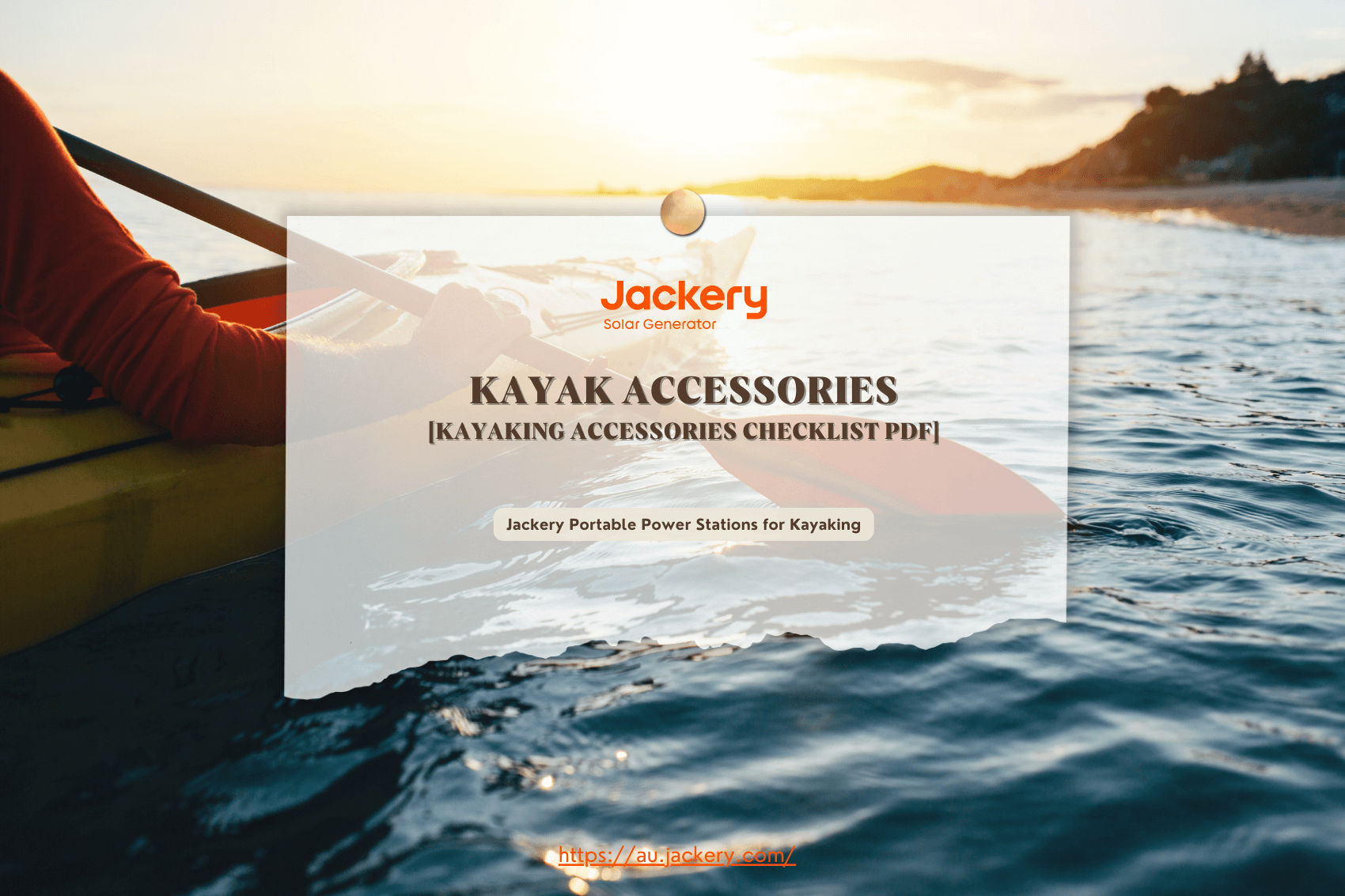|
Key Takeaways: |
|
- Dress for water temperature, not just air temperature, when kayaking. - Avoid cotton as it holds water, dries slowly, and increases hypothermia risk. - Choose appropriate footwear like water shoes or neoprene boots; avoid flip–flops. - Always wear a properly fitted PFD, which is a legal requirement in Australia beyond 100m from shore. - Night kayaking requires reflective clothing, proper lighting, and emergency gear. - We recommend Jackery Explorer 300 Plus portable power station for your kayaking trips to charge your personal electronics and devices outdoors, especially for overnight trips. |
General Rules on What to Wear Kayaking
If you go kayaking in Australia, it is necessary to dress adequately for both safety and comfort. This is because the temperature and water conditions in Australia are quite different from one another. Here are some general rules that will help you to dress appropriately for kayaking:
Rule 1: Dress for the Water Temperature, Not Just the Air
Australian waters can be cold even on warm days, particularly in southern locations such as Victoria and Tasmania. Always be prepared for the danger of capsizing.
Rule 2: Avoid Cotton
Cotton holds water, dries slowly, and loses insulating characteristics while wet, raising the danger of hypothermia. Instead, choose synthetic textiles such as polyester, nylon, or wool, which insulate even when damp.
Rule 3: Layer Your Clothing
When you layer your clothing, you can adapt to the changing weather conditions. Material that wicks away moisture, such as thermal shirts or rash vests, constitutes the base layer. The mid layer consists of insulating layers such as fleece, which maintain their warmth even when wet. For protection against rain and spray, the outer layer should consist of paddling cags or jackets that are both windproof and waterproof.
Rule 4: Choose Appropriate Footwear
Ensure that your feet are protected from sharp things such as oyster shells and that you have a solid grip on slippery areas. Water shoes, neoprene boots, and old sneakers are recommended. Thongs and flip-flops should be avoided because they are easily removed and provide little protection.
Rule 5: Always Wear a Personal Flotation Device (PFD)
Wearing a correctly fitted PFD is critical for safety and a legal requirement in Australia when kayaking more than 100 metres from shore. Select a comfortable PFD that provides the flexibility of movement and is brightly coloured for visibility.
Rule 6: Protect Yourself from the Sun
Despite the presence of clouds, the sun in Australia can be pretty intense. Dress appropriately by donning long-sleeved shirts and pants made from materials with a UPF rating. A hat with a wide brim and a chin strap, as well as polarised sunglasses with a retainer strap, are the accessories you should have. Apply water-resistant sunscreen that is reef-safe to skin that is left uncovered.

General Kayaking Wardrobe Items
If you want to be ready for kayaking activities, here is a quick breakdown of the types of clothes that you might need to be adding to your wardrobe:
Core Clothing (Base, Insulation and Protection): Wear layers depending on the weather and sea conditions. First, use a thermal base layer or rash vest to control moisture and regulate body temperature. If it's cold, add a layer of fleece or neoprene. For wind and water protection, add a paddling cag or spray jacket. Wear neoprene pants or wetsuit bottoms in colder weather or quick-dry shorts in warmer weather for your lower body. Avoid cotton because it doesn't provide insulation and stays wet.
Footwear and Sun Protection: Use water shoes, neoprene booties, or old sneakers that fit snugly and have sufficient traction to protect your feet. Wear a wide-brimmed hat or cap, polarised sunglasses with a retainer strap, and clothing with a UPF rating if possible because sun protection is essential in Australia. On exposed areas, use a water-resistant, reef-safe sunscreen.
Safety and Accessories: A properly fitted personal flotation device, or PFD, is legally required in many places and is not negotiable for safety. Paddling gloves for hand and grip protection, a neck gaiter for additional wind or sun protection, and a dry bag to keep valuables and extra clothes dry are all optional but helpful equipment. Consider a hydration pack, spray skirt, or even a wetsuit or dry suit for extra insulation if you're paddling long distances or in chilly waters.
We also have some kayaking guides for you:
How to Dress for Kayaking in Different Water Conditions
Given the wide range of situations that might be encountered on the water, it is essential to dress adequately for kayaking to ensure both safety and comfort. A guide to dressing appropriately for the various temperatures of the water is as follows:

Cold Water (Below 15C / 59F)
Hypothermia risk increases under cold water conditions, even if the air feels warm. It's crucial to dress for potential absorption in such surroundings.
Dry Suit: A dry suit is completely waterproof, so you'll stay dry even if you capsize. Add thermal foundation layers underneath for extra insulation.
Wetsuit: A neoprene wetsuit traps a thin layer of water between the suit and your skin, which your body heats and thus provides insulation. A 3mm "Farmer John/Jane" wetsuit (sleeveless with long legs) is recommended for cold conditions.
Additional Gear: Consider wearing neoprene gloves, booties, and a wool or neoprene cap to protect your extremities from the cold.
Cool Water (15C to 20C / 59F to 68F)
Layering is necessary to ensure comfort and safety in colder water temps.
Base Layer: Wear moisture-wicking thermal tops and bottoms made from synthetic materials or merino wool.
Insulating Layer: Add a fleece or neoprene layer for warmth.
Outer Layer: Use a waterproof and windproof paddling jacket or cag to protect against spray and wind.
Footwear: Opt for neoprene booties or water shoes that provide insulation and grip.
Warm Water (Above 20C / 68F)
Sun protection and maintaining a cool body temperature become more critical when the water temperature is warm.
Clothing: Wear lightweight, quick-drying clothing such as board shorts and UPF-rated rash guards. Avoid cotton, as it retains moisture and can cause chafing.
Sun Protection: Use a wide-brimmed hat or cap, polarised sunglasses with a retainer strap, and apply water-resistant, reef-safe sunscreen to exposed skin.
Footwear: Choose water shoes or sandals with good drainage and grip.
General Tips for All Conditions
Personal Flotation Device (PFD): Always wear a properly fitted PFD, regardless of water temperature.
Dry Bag: Carry a dry bag with spare clothing, snacks, and essential items.
Hydration: Bring a reusable water bottle to stay hydrated during your trip.
Weather Check: Always check the weather and water conditions before heading out, and adjust your clothing accordingly.
What to Wear for Kayaking in Different Time
Dressing for the season and the time of day is crucial when organising a kayaking expedition. Your clothes should adjust to the weather extremes, from a hot summer afternoon to a freezing winter morning, to guarantee your comfort, mobility, and security.
Knowing what to wear for kayaking at different times will help you make the most of your experience, whether it's battling the midday sun or staying warm during early morning paddles or late sessions.

Summer Kayaking (Daytime)
The sweltering summer months are when recreational activities really shine. You might be lucky to get sunny days and pleasant waters, depending on where you are kayaking. This could be a nice way to cool off, even if the water is still fresh, especially on the beach.
Upper Body: Protect your skin from UV rays in the summer by wearing a lightweight, moisture-wicking rash guard or a UPF-rated long-sleeve shirt. These materials dry fast, allowing you to stay comfortable on lengthy paddles. Avoid cotton since it retains moisture and can cause chafing when wet. Long-sleeved shirts also lessen the need for frequent sunscreen reapplication.
Lower Body: Quick-drying shorts or light synthetic paddling pants are suitable for summer kayaking. Choose materials that will not stay wet or heavy, such as nylon or polyester. These textiles also help to reduce skin irritation and sunburn on your legs. Board shorts are a comfortable and breathable solution for sitting on top of a kayak.
Footwear: Wear water shoes or sandals with a strong grip to protect your feet and give traction while launching or landing. They should be secure-fitting so they don't slip off if you wade through water. Avoid flip-flops, as they provide no protection and can easily float away. Drainage holes and quick-dry materials are great for comfort.
Accessories: Sun protection is crucial, so wear a wide-brimmed hat or a protective cap. Sunglasses should be polarised to prevent water glare and should always be secured with a floating retention strap. Apply reef-safe, water-resistant sunscreen liberally to exposed areas, particularly the neck and hands. A hydration pack or water bottle will help you keep cool and avoid heat exhaustion.
Winter Kayaking (Daytime)
Of course, the coldest conditions for paddling occur throughout the winter. There is a very substantial risk associated with really cold water. You will need to wear layers of clothing that can withstand the cold and water to stay warm while kayaking.
Base Layer: In winter, start with a thermal base layer composed of synthetic fabric or merino wool. These materials drain moisture away from your body and remain warm even when wet—a tight fit for greater layering and insulation. Cotton should never be used since it loses its insulating properties when wet.
Mid Layer: Add an insulating fleece or a neoprene top to help keep your body warm. Neoprene is particularly handy since it provides insulation even when wet. The fleece is breathable and comfy, ideal for mild winter days. You can modify layers based on exercise intensity and outdoor temperature.
Outer Layer: A waterproof and windproof paddling jacket or dry suit is required to protect against chilly winds and spray. Dry suits provide full-body protection and are particularly useful in extremely cold water. These outer layers help you prevent hypothermia if you capsize. Look for designs that promote arm movement and comfort while paddling.
Footwear: Wear neoprene booties or insulated waterproof boots to protect your feet from cold water. Pair them with wool or synthetic socks to keep your feet toasty. To avoid blisters, ensure that your footwear fits properly. Even with dry suits, good footwear is necessary for comfort and safety.
Accessories: You should always wear your personal flotation device (PFD) snugly over all of your layers, carry a dry bag with extra clothes in case you get wet, and protect your hands from the wind and icy water with neoprene gloves and wool or neoprene beanie.
Night Kayaking
Outfit yourself and your kayak with reflective tape, or wear clothing with reflective elements. This dramatically increases your visibility to other boaters and light sources. If you're new to night kayaking, start with evenings that have some ambient light, like a full or partial moon. Familiar waters will also make navigation easier when visibility is reduced.
Clothing: Wear layers to adapt to the evening's dropping temps. To protect yourself from the cold, use a windproof jacket and base layers that are thermal or quick-drying. It's necessary to dress as if you may fall into the water, even at night. Comfort and safety go hand-in-hand during night paddles.
Visibility: Dress in reflective or bright apparel to increase your low-light visibility. Reflective patches on your cap or PFD can make it easier to identify. Use a kayak-mounted light or a waterproof headlamp because lights are crucial. Packing an extra torch or backup batteries is also a good idea.
Safety Gear: In the event of an emergency, always keep a whistle, signal light, or other emergency alarm device on hand. Kayaking at night can be serene, but it's more challenging to see and communicate. Always make sure your PFD is securely fastened. Paddling at night with a friend or in a group is also a smart choice.
Besides, as for the overnight kayaking trip, it is suggested that you take a portable power station, like Jackery Portable Power Station. As highlighted before, proper lighting is mandatory and crucial for safety at night. A portable power station ensures you have a reliable power source for your white all-around light, headlamp, and any other safety lights you might use. You won't have to worry about batteries dying unexpectedly, which could put you in a dangerous situation with limited visibility for other boaters.
Planning Ahead: Before leaving in the evening, check the tides and weather predictions. Tell someone where you plan to paddle and when you expect to return. In particular, if your paddle takes longer than anticipated, pack extra water and snacks. It's also good to have warm clothing in a dry bag if the weather changes.

How to Layer With a Wetsuit or Dry Suit
When kayaking, layering is essential to remaining warm. Regardless of whether you're wearing a dry suit or a wetsuit, you can still layer up to improve comfort and paddling efficiency. There are fewer options for layering in wetsuits. A second lycra rash guard can be placed underneath the neoprene.
The difference will be apparent as this is an additional layer of heat. You should definitely think about upgrading to a dry suit, though, if you're considering layering a wetsuit for warmth. The layering strategy for cold weather paddling really comes into play with drysuits. A drysuit by itself isn't a warm piece of equipment; what you wear underneath is what matters.
You should consider the following layers: thermal base layers, which consist of long-sleeved tops and long pants, tops that dry quickly, jogging pants or yoga pants, fleece sweaters, and waterproof socks.
A life jacket and a waterproof jacket with a zipper are two additional layers that can be worn on top of the layers that are already underneath. When whitewater kayaking in chilly circumstances, both of these are much appreciated because they provide a barrier against the wind and spray.
|
Wetsuit vs. Dry Suit Layering |
||
|
Feature |
Wetsuit |
Dry Suit |
|
Insulation method |
Traps water; the body heats it |
Requires thermal layers underneath |
|
Fit |
Snug, body-hugging |
Looser to accommodate layers |
|
Base layer |
Optional, thin rashie or thermal |
Essential, moisture-wicking |
|
Mid layer |
Usually not needed |
Fleece or padded thermal wear |
|
Best for |
Warmer cold water (active paddling) |
Very cold water or prolonged exposure |
Clothing To Avoid For Kayaking
When preparing for a kayaking expedition, choosing the correct clothes is vital for comfort, safety, and performance. Certain clothing choices can impede your time on the water. Here's a list of what to avoid wearing while kayaking:

Avoid Cotton Fabrics
Cotton holds water and dries slowly, which can cause discomfort and raise the risk of hypothermia in lower temperatures. Base layers should be made from moisture-wicking materials such as polyester, nylon, or merino wool. These textiles help you stay dry and control your body temperature effectively.
Avoid Flip-Flops or Open-Toed Footwear
Flip-flops may appear convenient but provide little protection and can easily come off in the water. Wear water shoes or sandals with secure straps and a non-slip sole to ensure safety and comfort while entering and exiting the kayak.
Avoid Tight or Restrictive Clothing
Clothing that is too tight can limit movement and cause discomfort while paddling. Conversely, excessively loose clothing may catch on equipment or impair stroke efficiency. Choose clothing that fits comfortably and allows a complete range of motion without being too tight.
Refrain from Wearing Jewelry or Accessories
Jewellery can become entangled in equipment or cause injury during a fall. Before you go kayaking, remove any rings, necklaces, or dangling earrings. Additionally, make sure that any accessories, such as watches or caps, are properly tied to avoid loss.
Avoid Clothing with Metal Components in Saltwater
Saltwater can corrode metal components, causing rust and possible damage to your gear. Avoid wearing clothing with zippers, buttons, or other metal pieces when kayaking in salt water. Choose equipment with plastic or corrosion-resistant components to ensure durability and functionality.
Other Essentials for Kayaking
When getting ready for a kayaking trip, it is also critical to pack the appropriate equipment to ensure your safety, comfort, and pleasure in the experience.
Core Kayaking Gear:
Kayak: Choose a kayak suitable for your intended activity, whether recreational, touring, or whitewater kayaking.
Paddle: Select a double-bladed paddle appropriate for your kayak type and paddling style.
Personal Flotation Device (PFD): Always wear a properly fitted PFD to ensure safety on the water.
Bilge Pump and Sponge: Carry a bilge pump to remove water from the kayak and a sponge for additional drying.
Spray Skirt: Use a spray skirt to keep water out of the kayak’s cockpit, especially in rough conditions.
Safety and Navigation Tools:
Whistle: A whistle is essential for signalling in emergencies.
Throw Rope: Carry a throw rope for rescues or assistance.
Navigation Tools: Bring a map, compass, or GPS device to navigate your route.
First Aid Kit: Pack a comprehensive kit tailored to water activities.
Portable Power: Carrying a portable power station allows you to recharge or power backup lights easily if your primary lights fail. This redundancy is critical in emergencies.
Clothing and Sun Protection:
Quick-Drying Clothing: Wear moisture-wicking, quick-drying fabrics to stay comfortable.
Sun Protection: Apply sunscreen, wear a wide-brimmed hat, and use sunglasses with a strap to protect against UV rays.
Water Shoes: Opt for water shoes with a good grip to protect your feet during launches and landings.
Essential Accessories:
Dry Bags: Dry bags keep valuables like phones, wallets, and electronics safe and dry.
Water Bottle or Hydration System: Stay hydrated with a reusable water bottle or hydration pack.
Snacks: Bring energy-boosting snacks, especially for longer trips.
Emergency Shelter: Carry a lightweight emergency shelter or space blanket in case of unexpected delays.
Jackery Portable Power Stations for Kayaking
Even beyond the specific needs of night kayaking, taking a portable power station on your kayaking trips offers a range of significant benefits that enhance convenience, safety, and overall enjoyment.
Whether you want to capture stunning scenery with your phone or camera, track your route with a GPS, or stay connected, a portable power station, like Jackery Portable Power Station, ensures your devices don't run out of battery while on the water.
For longer kayaking excursions or multi-day trips, a portable power station allows you to recharge your essential electronics, enabling you to stay out longer and explore further without worrying about power limitations. Here, we highly recommend Jackery Explorer 300 Plus for your kayaking, especially for overnight trips.
Jackery Explorer 300 Plus
The Jackery Explorer 300 Plus is a compact, lightweight, portable power station that can help kayaking significantly. The Jackery 300 Plus has a capacity of 288Wh and an output of 300W, featuring dual PD ports with a maximum output of 100W, facilitating rapid charging for multiple devices concurrently and providing diverse charging alternatives, enhancing its utility for outdoor charging.
Make use of our state-of-the-art innovations for longer battery life and faster charging times. You can recharge it with SolarSaga 80W (for 6.3 hours), wall outlet (for 2 hours), USB port (for 4 hours), and carport (for 5.5 hours)
With its sturdy 10-year lifespan and Lithium Iron Phosphate (LiFePO4) battery, the Jackery 300 Plus ensures the safety of all your electrical gadgets by providing a clean sine wave and steady voltage. The reliable power source and cutting-edge ChargeShield technology protect against any equipment damage.

Power Your Light in Night Kayaking: While its capacity might not be necessary for all-night continuous use of high-powered lights, the Explorer 300 Plus provides a dependable power source for your kayak's safety lights (white all-around light, headlamp) during early morning, late evening paddles, or when visibility is reduced due to weather.
Maintain Communication & Navigation Tools: The Explorer 300 Plus can recharge your smartphone or VHF radio, which is crucial for communication in emergencies or staying in touch with your paddling group. If you rely on a GPS device to track your route or navigate unfamiliar waters, the Jackery can keep it powered throughout your trip.
Keep Other Electronics Powered: Keep your GoPro or other action cameras charged to capture your kayaking adventures. Enjoy some music on the water (while being mindful of others and the environment) by powering a small Bluetooth speaker. For longer trips with breaks on shore, you can recharge your tablet or e-reader for entertainment.
|
Electronics & Devices |
Running Time |
|
Mobile Phone (29W) |
13 Times |
|
Camera (8.4W) |
12 Times |
|
Go Pro (5W) |
40 Times |
|
Portable Fridge (90W) |
2.5H |
|
Light (5W) |
16.4H |
(*The working hours are only for reference; the actual working hours depend on your usage.)
FAQs
The following are the frequently asked questions about what to wear for kayaking.
1. Do you wear a bathing suit for kayaking?
You can wear a bathing suit for kayaking, but it's best used as a base layer rather than your only piece of clothing. Bathing suits are designed to handle water and dry quickly, making them suitable for wet environments.
However, since they offer little protection from the sun, wind, or chafing, it's a good idea to layer over them with quick-dry shorts, a rash guard, or other water-friendly clothing. If you're kayaking in cooler conditions or for more extended periods, pairing a bathing suit with additional thermal or UV-protective layers is a more intelligent and more comfortable choice.
2. What are the three golden rules of kayaking?
The three golden rules of kayaking are basic but necessary for safety and fun. Wear your personal flotation device (PFD) at all times to keep you afloat in the event of a capsized boat. To avoid cold water shock or hypothermia, dress for the temperature of the water rather than the air. Also, always keep attached to your kayak—either with a paddle leash or by holding onto your boat—to avoid becoming separated if you turn over.
3. Do you wear shoes when kayaking?
For several reasons, it is advised to wear shoes when kayaking. If you were to come into contact with sharp items or pebbles in the water, shoes could protect you from getting hurt. Additionally, shoes improve the kayak's grip, which increases stability and control.
4. Are flip flops ok for kayaking?
It is typically not advised to wear flip-flops when kayaking. Flip flops won't give you the support you need when walking on damp rocks, even though you might think they'll let your feet breathe and dry rapidly.
Final Thoughts
To summarise, outfitting yourself with the appropriate gear and clothes is critical to having a good kayaking expedition. Whether to shield yourself from the sun, maintain your body temperature in cold water, or ensure your safety using a personal flotation device (PFD), every choice is essential. If you follow the advice in this guide, you can concentrate on taking in the breathtaking scenery of the river and have an experience you will never forget when kayaking.

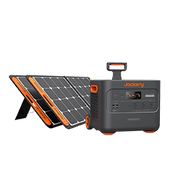
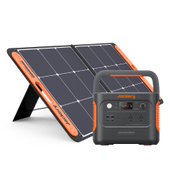
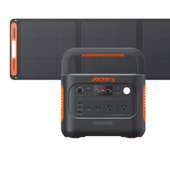

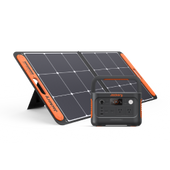


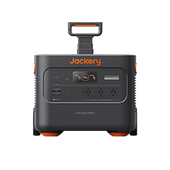
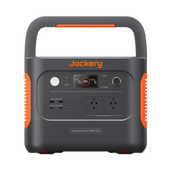

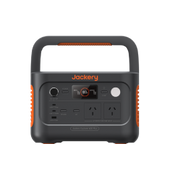
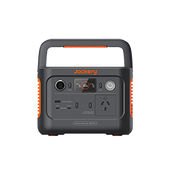
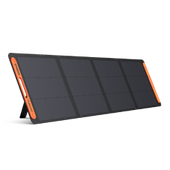
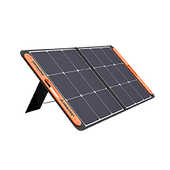


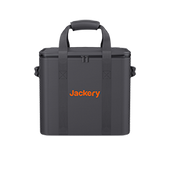

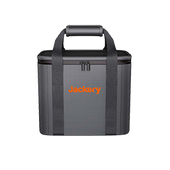

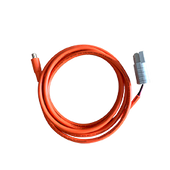
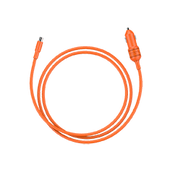
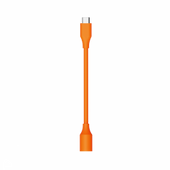
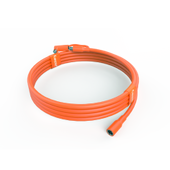


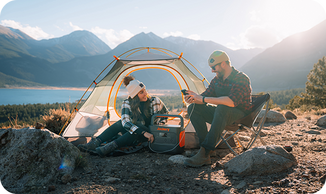


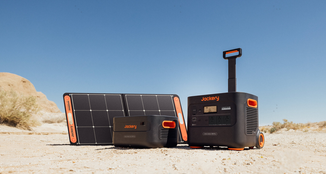
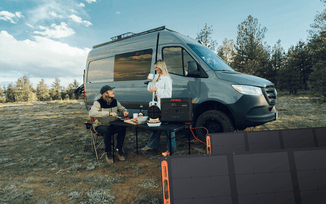




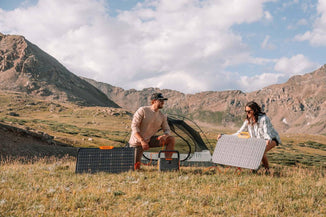
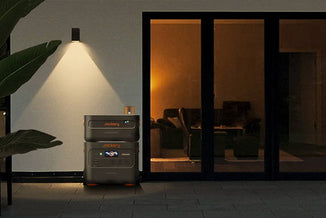

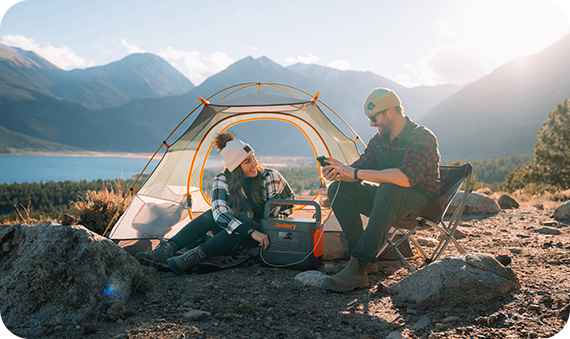
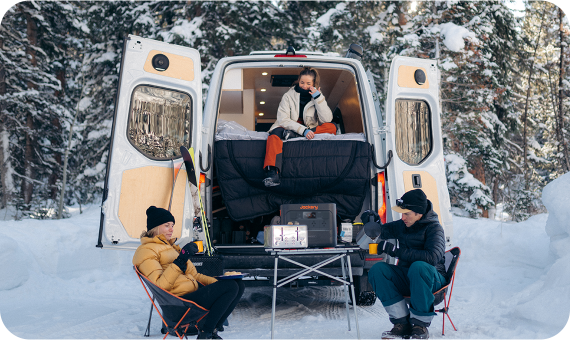



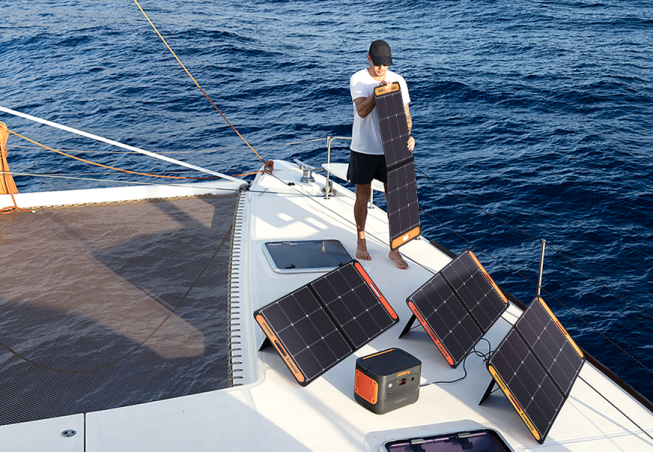



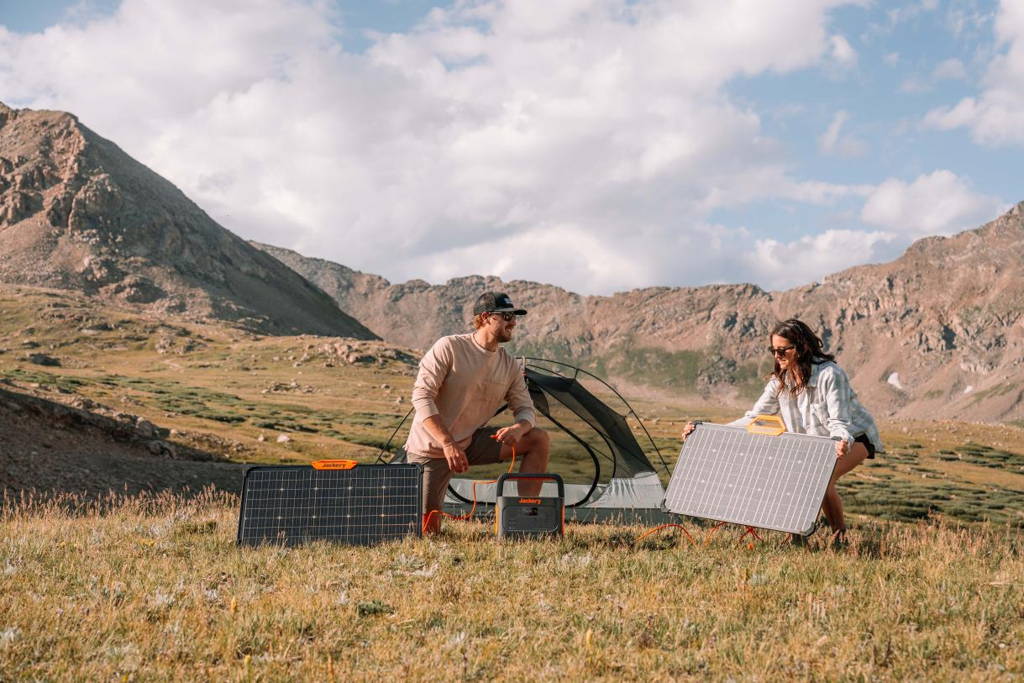


![What to Wear for Kayaking [Different Water Conditions]](http://au.jackery.com/cdn/shop/articles/what_to_wear_kayaking.png?v=1745924601)




